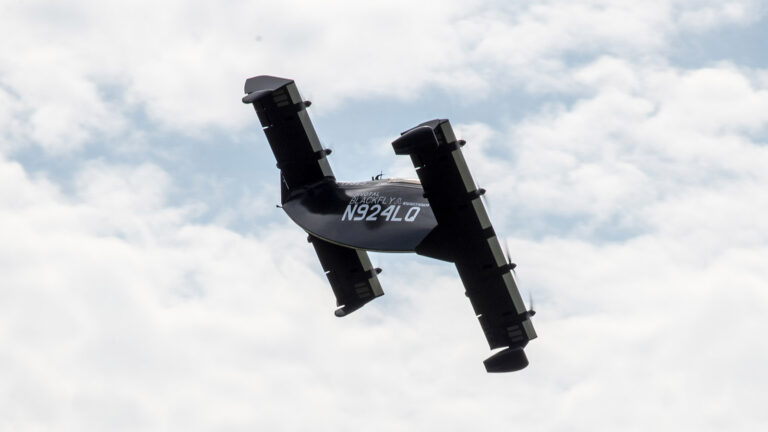Stay Up to Date
Submit your email address to receive the latest industry and Aerospace America news.
Discussions begin about whether these single-person electric aircraft should be treated the same as piston-engine ultralights
The arrival of the first personal air vehicles to the aircraft market in the United States has triggered advocacy groups to vie for influence in the coming decisions about whether or how these aircraft should be permitted to fly over parklands and other open spaces.
Multiple companies are developing or now producing single-person PAVs that have very simple controls, similar to a video game, and are quieter than fossil fuel piston engines. Examples include Stockholm-based Jetson Aero and Pivotal of Silicon Valley.
The ease of control could give rise to a new class of ultralight aircraft operators: People who might otherwise have been intimidated by the thought of flying an ultralight. PAVs take off, land and cruise with the touch of buttons that send electric commands to instantly spin up or slow propellers.
This adds up to what PAV makers hope will be brisk sales and an expansion of the ultralight market — which in turn has raised the question of where PAVs should be permitted to fly compared to conventional ultralights. Today, with some exceptions granted by air traffic controllers, ultralight aircraft must stay out of controlled airspace, and when flying over water or sparsely populated areas, they must stay 500 feet above the tallest obstacles or fly around them.
The coming influx of new ultralight operators is on the mind of John McKenna, chairman of the Recreational Aviation Foundation of Bozeman, Montana, which advocates allowing responsible access to wild areas by general aviation aircraft pilots.
“I hope we can be in it together, and that the people who buy these personal electric aircraft are not like the [personal watercraft] at the lake, wrecking the serenity by trolling around for hours,” he says, “or like a skateboard crowd in aviation, where they are sliding down the rail at the library, so that they anger the public and the aviation industry.”
RAF views itself mainly as a conservation organization that tries to preserve the natural character of pristine areas that its donors access.
“We’re essentially a safety and etiquette organization,” McKenna says. “The issue is always the same: Are you being a courteous user, consistent with others that are using the same natural area who may have driven in or hiked in?”

Get the latest news about advanced air mobility delivered to your inbox.
McKenna says his organization hasn’t engaged in dialogue with electric aircraft designers or regulators yet about its concerns.
Another aviation organization, Vertical Aviation International (formerly the Helicopter Association International) is worried that FAA and the National Park Service might decide to treat electric aircraft, including PAVs, the same as combustion-powered aircraft in deliberations over restrictions.
Even setting aside the noise issue, “the reality is aircraft do a hell of a lot less damage than 1,000 people walking through. They don’t leave footprints or damage the flora and fauna,” says Bailey Wood, VAI’s director of strategic communications, including government relations.
Ken Karklin, CEO of electric aircraft company Pivotal, says the company’s single-person BlackFly PAV and the upcoming Helix, a new generation of that aircraft, fall under the same rules that ultralight aircraft have had to abide by for decades. He doesn’t see any reason that aircraft operators will abuse those rules anymore in an electric vehicle than they would in another form of ultralight.
The company has required training for anyone wanting to buy and operate their aircraft and is relying on community education to ensure safety and acceptance, he tells me. One of Pivotal’s first customers has flown a BlackFly daily over the rural sparsely populated hills of central Washington state without incident.
“We’ve done community events,” Karklin says. “Some say it’s the coolest thing in the world. But we also get people asking things like, ‘Why is the government flying that black drone over my property, and can we shoot it down?’”
In cruise mode, he says, it’s the quietest aircraft the company has ever witnessed. Indeed, I watched an unoccupied BlackFly cruise over an open field at an Ohio airfield last week, and it was barely audible at a distance of about 45 meters.
But, Karklin acknowledges, “You can hear it well from a distance when it takes off or lands.”
About paul brinkmann
Paul covers advanced air mobility, space launches and more for our website and the quarterly magazine. Paul joined us in 2022 and is based near Kennedy Space Center in Florida. He previously covered aerospace for United Press International and the Orlando Sentinel.
Related Posts
Stay Up to Date
Submit your email address to receive the latest industry and Aerospace America news.




